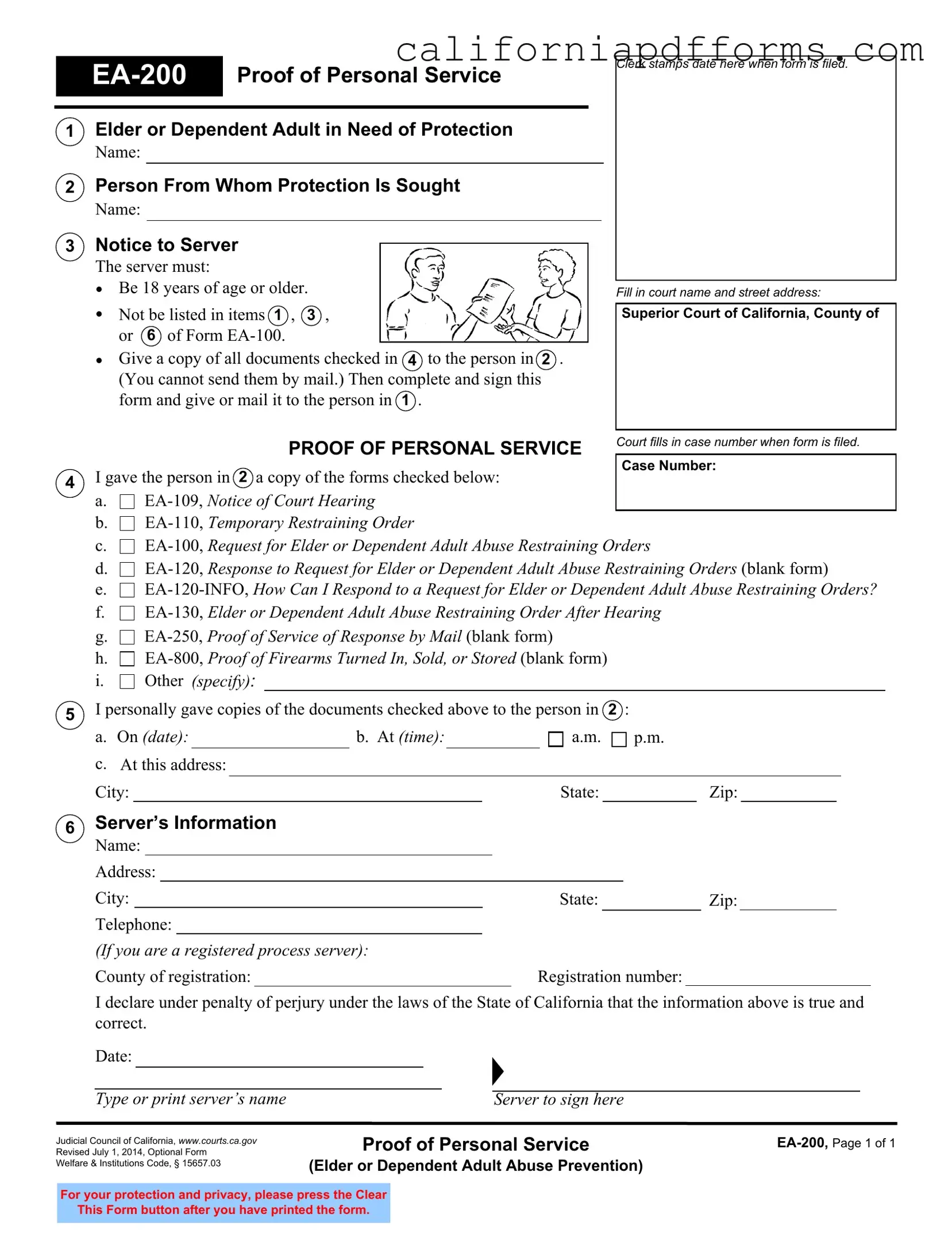Download California Ea 200 Form
The California EA-200 form, known as the Proof of Personal Service, is a crucial document used in cases involving elder or dependent adult abuse. This form verifies that necessary legal documents have been personally delivered to the individual from whom protection is sought. Understanding how to properly complete and submit this form is essential for ensuring the safety and rights of vulnerable adults.
To fill out the form, click the button below.
Open Your Form Online
